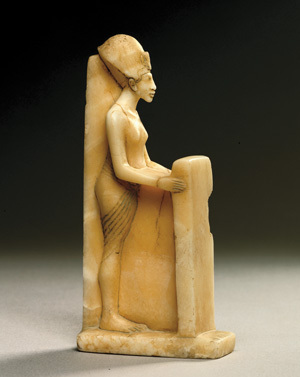 loading
loading
FindingsRoyal diagnosis Bildarchiv Preussischer Kulturbesitz/Art Resource NYAn alabaster statuette, c. 1345BCE, of the androgynous pharaoh Akhenaten. View full imageAkhenaten, who ruled Egypt from around 1353 BCE to 1336 BCE, was married to the legendary beauty Nefertiti. But Akhenaten himself "was definitely a funny-looking pharaoh," says Irwin M. Braverman, a Yale dermatologist whose avocation is applying medical analysis to art history. In every known portrait, "he's depicted as having breasts, a lantern jaw, and an oddly elongated head." Some Egyptologists have theorized that Akhenaten's unusually androgynous features are metaphorical, symbolizing his belief that he embodied the creator deity. But in general, Egyptian art was more naturalistic in Akhenaten's time than at other periods. And the more Braverman studied images of the pharaoh, his son and daughters, and earlier members of the 18th Dynasty, the more he became convinced they were accurate portraits of people who shared an obscure genetic abnormality. In the April 21 Annals of Internal Medicine, Braverman and his colleagues argue that the unusual breast and hip development in these 18th Dynasty men and young girls is best explained by aromatase excess syndrome -- a genetic abnormality that results in too much estrogen in the body. (It could also account for the pharaoh's voice, described as beautiful and feminine.) Braverman attributes the elongation of Akhenaten's and his relatives' heads to a second genetic defect. "In fact, the members of the 18th Dynasty might share a single variant gene that caused all their problems," says Braverman. "All we need to prove our diagnosis is some DNA." Akhenaten's mummy has never been found. Braverman hopes, one day, to test the five known royal mummies in the pharaoh's line.
The comment period has expired.
|
|